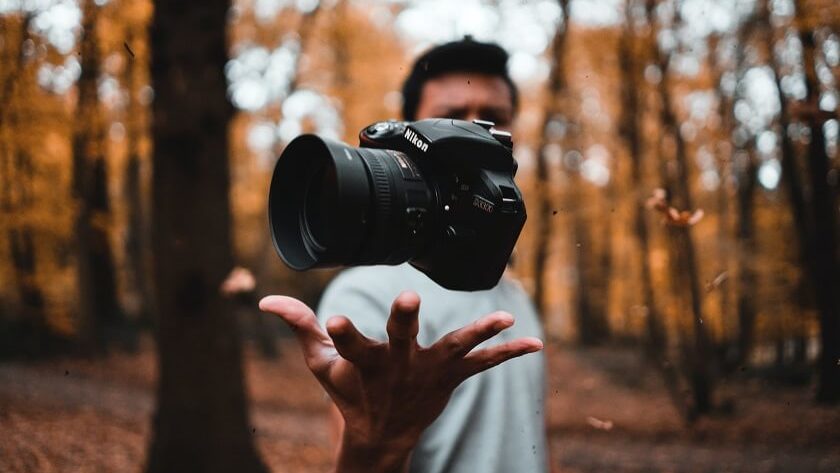We are often intimidated by taking photos of other people. The reason behind it can be because we don’t have courage to ask someone to be our subject or because we’re afraid that neither we nor the subject will be happy with the final result. That shouldn’t be such a boogieman, though. Photographing people is quite easy. Every single person is a unique inspiration, and every detail, ranging from eyes to clothes can make the photograph better. It doesn’t matter if you are photographing with your phone camera or a DSLR, there are some things to keep in mind if you want to take photos of people like a pro.
Use the portrait format
There is a landscape format (horizontal) and a portrait format (vertical), so why would you use a landscape format for people? Vertical orientation is much better suited for taking photos of people, because people are taller than they are wide. However, there are some situations when you can use landscape orientation. For example, if you are trying to tell a story about a subject so the background is essential.
Let the subject fill the frame
This is so much easier if you turn the camera on its side, because the subject, who is in a vertical position, already fills the frame, if you get close enough (not closer than 6 feet). However, you should make sure that, regardless of the orientation, you always leave just a little empty space on the sides and a little more above the head.
The person is more important than the background
So, you have found a beautiful colorful background and you want to photograph your subject there. Too busy backgrounds will distract the eye from your subject and result in a chaotic photograph. Instead, you’ll want to find a plain background, such as the sky, a wall, a tree, etc. Standing a bit further than the subject and turning on spot focus will help you keep the background blurry.
Photo by sarandy westfall on Unsplash
Make sunlight your friend
People often think that bright sunlight is the best for making great photographs, but experienced professionals would tell you that bright sunlight also produces dark shadows which results in a very unflattering portrait. It is better to photograph on a cloudy day, or during the golden hour (shortly after sunrise or before sunset). You can always see how the professionals choose to tackle this issue.
Focus on the eyes
Have you ever heard the saying that the eyes are the mirrors of the soul? Well, that is the truth, especially if we are talking about photographs. Capturing one’s emotion is easiest when you focus on the eyes. The expression in the subject’s eyes will depend mostly on your communication (more about that later), but also on the catch light (the reflected light in the eyes), and post-production, but that’s a whole different story.
If you own a DSLR, think about the lens
Phone cameras today make terrific photographs, so you shouldn’t worry about this. But if you already own a DSLR camera, your usual standard 18-55mm lens should do the trick. However, for the best results you should always go with the prime 50mm lens.
Encourage the subject to act natural
Finally, the most important prerequisite for a good portrait is communication with the subject. If you truly want the picture to show his/her character and personality, you should be relaxed and motivate the subject to act natural as well. This will make the situation easier for both of you, and with time, you’ll be able to direct (not just take) photos, evoking the emotions you need and advising the right poses.
Over time, when you master these tips, you’ll be able to tap into the finesses of portraiture, and recognize the subject’s “good side”. However, the progress never comes without practice.






